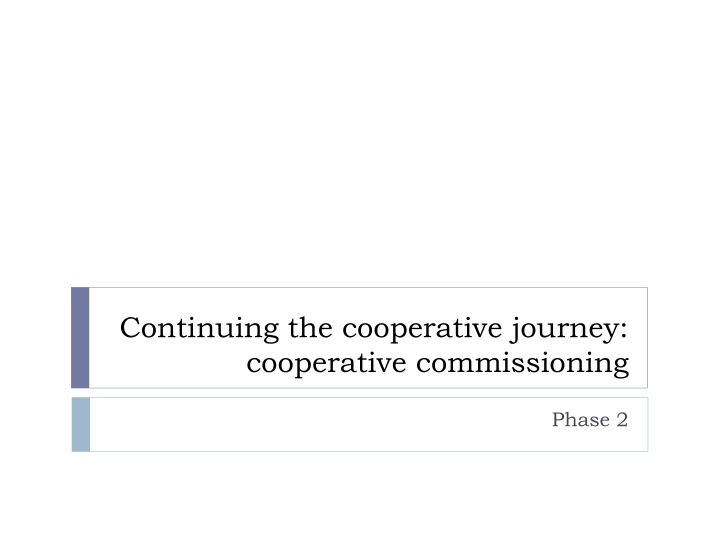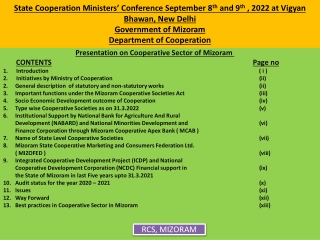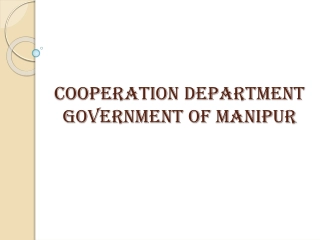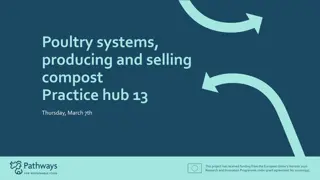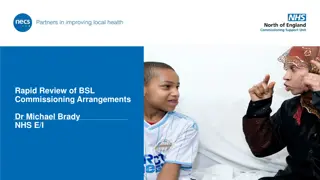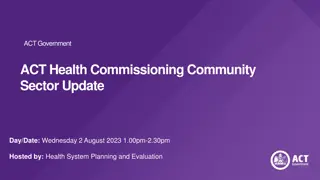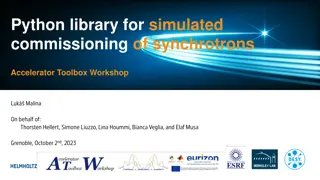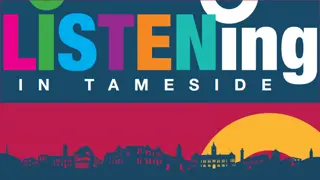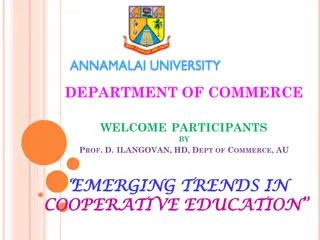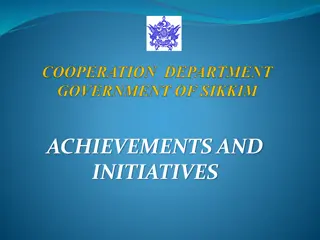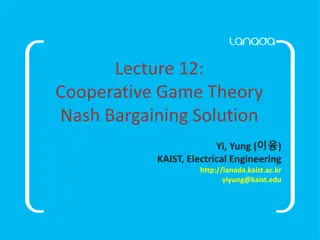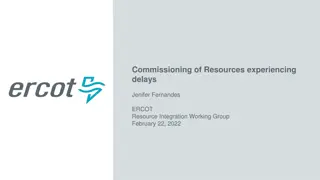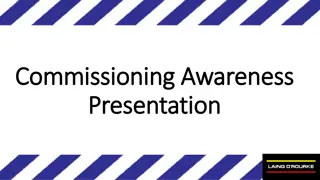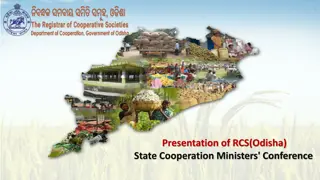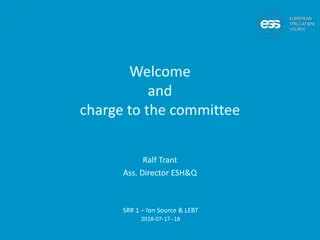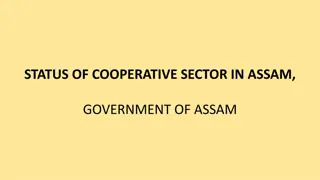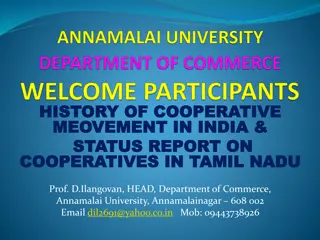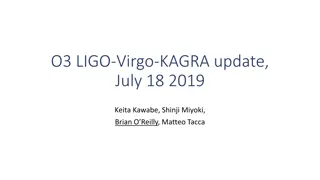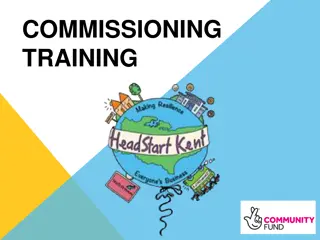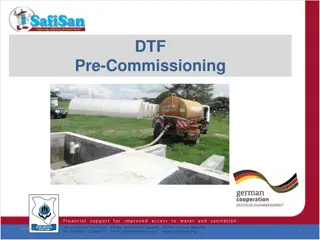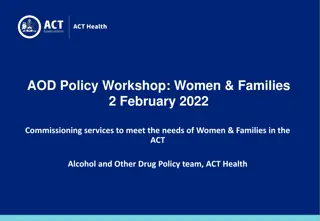Cooperative Commissioning: Phase 2
In this phase of the cooperative journey, the focus is on commissioning and collaboration. Building on the previous work, Phase 2 delves deeper into the process, ensuring smooth transitions and successful outcomes. Stakeholders come together to drive progress and achieve shared goals, gearing up for further developments in the project.
Download Presentation

Please find below an Image/Link to download the presentation.
The content on the website is provided AS IS for your information and personal use only. It may not be sold, licensed, or shared on other websites without obtaining consent from the author.If you encounter any issues during the download, it is possible that the publisher has removed the file from their server.
You are allowed to download the files provided on this website for personal or commercial use, subject to the condition that they are used lawfully. All files are the property of their respective owners.
The content on the website is provided AS IS for your information and personal use only. It may not be sold, licensed, or shared on other websites without obtaining consent from the author.
E N D
Presentation Transcript
Continuing the cooperative journey: cooperative commissioning Phase 2
The model learning from existing projects What have we learned? Starting with a conversation about the change people want to see Defining outcomes locally Working differently with ward councillors Tulse Hill project Practically capacity building in the community and among officers and councillors for community based commissioning West Norwood Workshop Testing out what local cooperation looks like Starting by mapping what is there, and what we can build on Identifying community priorities for change Defined budgets for local areas to be used achieving outcomes Need to rethink community engagement approach Key role for ward councillors Cooperative local investment plans Starting with a conversation about the change people want to see in their area Neighbourhood Enhancement Programme Focus on building local networks Recognition that priorities are different in different neighbourhoods Different role for ward councillors
The model This is still cooperative commissioning Understanding assets & needs, outcomes determined Outcomes prioritised and resources allocated Monitoring and review CITIZEN But not all cooperative commissioning needs to, or should, take place at a borough wide level Marketplace understanding and options appraisal Activity and service delivery Acquisition of services and activities
The model how could it work? How can it work? Cabinet role Which outcomes are best commissioned at which level? How do we decide what gets commissioned at what level? Look at the outcomes at a more granular level and ask: 1. What is the political aspiration? 2. What offers the best value for money? 3. Where do we most need to work closely with people to achieve the outcome? 4. Where can we build on what is already there? Cabinet decides Allocate resources to each outcome
The model how could it work? How can it work? Councillors and citizens Young people have opportunities to fulfil their ambitions: How can we achieve that outcome here? Looking at the strengths and needs of our community, we think it would be best to focus on: * Young people have the skills and attributes that support them to have sustainable careers *Parents are recognised for playing a strong and positive role in the family and community Citizens (residents, businesses, groups) Councillors Officers Working together to undertake commissioning We have these resources ( , people, partners) to achieve this outcome NB this example of outcome development is taken from Tulse Hill pilot
The model how could it be delivered? We re still working out: Cooperation What are the most (cost) effective ways of working together with people in commissioning and sustaining this over time? Capacity What kind of support and development will ward members need to play a leadership role in this? What kind of support and development do officers need to work more flexibly to support citizens participate in commissioning, including the delivery of outcomes?
And are still working on. Clarity How do we address some of the systems issues? What is the best way of allocating resources/ disaggregating budgets? What issues might arise from operating commissioning at different levels? Too much complexity? Efficiency cost? Does neighbourhood commissioning automatically lead to more neighbourhood delivery?
Help where are you at? What are you doing to work at a local level? Do you develop local outcomes? Are you doing commissioning locally, or is it neighbourhood management? What have you learnt? What is distinctly cooperative about your arrangements?
